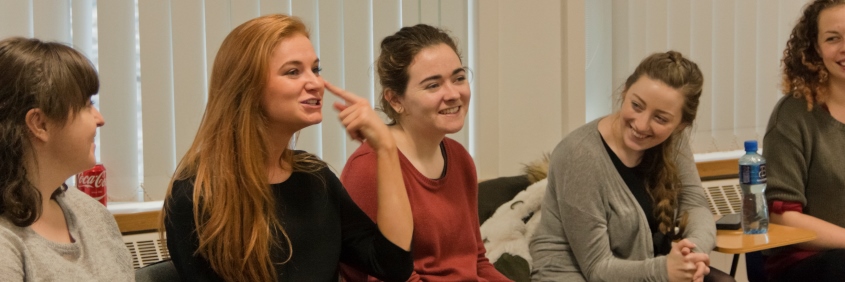Centre for Deaf Studies
Irish Sign Language

Irish Sign Language (ISL) is the sign language used in the Republic of Ireland, and in parts of Northern Ireland and is used by about 6000 deaf people across the island of Ireland (Leeson and Saeed 2012).
There has historically also been some use of ISL in England (mainly Liverpool and London) and in Scotland by Irish Deaf emigrants (London) and by British Catholic Deaf people educated in schools that were originally run by the Dominican order of Catholic nuns. ISL was also used in some Catholic Schools for the Deaf in parts of Australia and South Africa, which has impacted on some local varieties of Auslan (Adam 2014) and South African Sign Language (Leeson and Saeed 2012).
Irish Sign Language is a language that emerged in the context of language contact over many hundreds of years (Leeson and Saeed 2012, Leeson, Saeed and Grehan 2015) – languages that have influenced ISL include British Sign Language (BSL), French Sign Language (LSF) and American Sign Language (ASL) in addition to spoken English and, to a lesser degree, French.
Given that segregation of male and female students is typical in most Irish schools, it is no surprise to learn that separate schools emerged for male and female deaf students. What is interesting is that this segregation led to the development of male and female varieties of ISL (LeMaster 1990). While gendered signing still remains, it is much less prevalent amongst younger signers than those who are now aged 70+ (Leeson and Grehan 2004, Fitzgerald 2014, Leeson and Saeed 2012).
References:
Adam, Robert. 2014.Unimodal Bilingualism in the Deaf Community: Contact between Dialects of BSL and ISL in Australia and the United Kingdom. Unpublished PhD. London: University College London.
Fitzgerald, Angela. 2014. A Cognitive Account of Mouthings and Mouth Gestures in Irish Sign Language. Unpublished PhD. Dublin: Trinity College Dublin.
Leeson, L., and Grehan, C. 2004. To the Lexicon and Beyond: The Effect of Gender on Variation in Irish Sign Language, in M. Van Herreweghe and M. Vermeerbergen, (eds.), To the Lexicon and Beyond: Sociolinguistics in European Deaf Communities, 39-73 Washington DC: Gallaudet University Press.
Leeson, L. & Saeed, J. 2012. Irish Sign Language. Edinburgh: Edinburgh University Press.
Leeson, L., Saeed, J.I. and Grehan, C. 2015: Irish Sign Language (ISL). In Bakken Jepsen,
Julie, De Clerck, Goedele, Lutalo-Kiingli, Sam & McGregor, William B. (Eds.) Sign Languages of the World - A Comparative Handbook. Berlin & Boston: Mouton De Gruyter & Ishara Press. Pp. 449-472.
LeMaster, B. 1990. The Maintenance and Loss of Female and Male Signs in the Dublin Deaf Community. Unpublished PhD. University of California, California.

